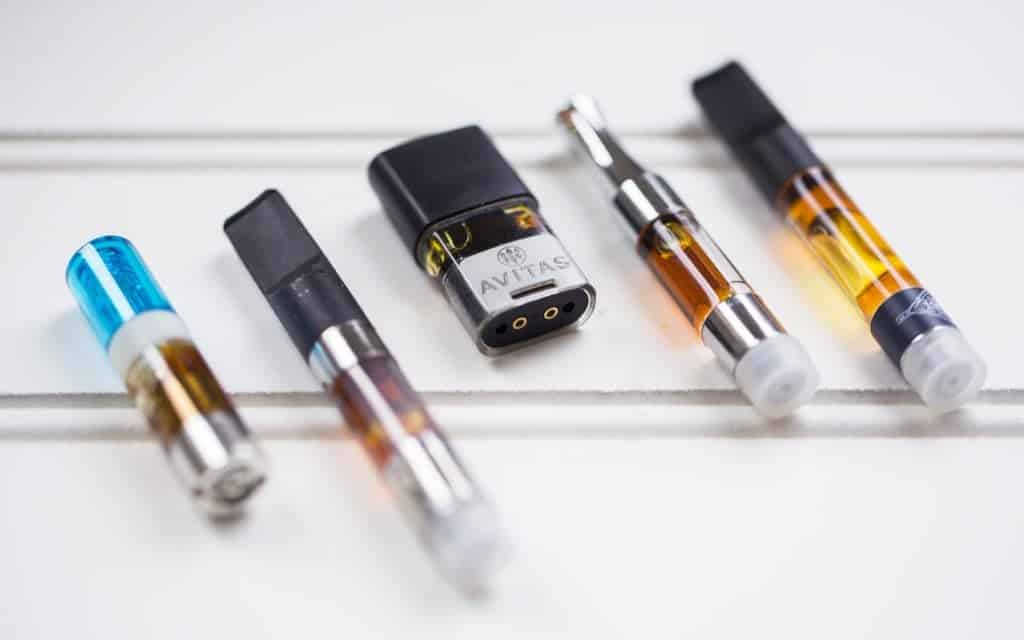How To Create Your Own Terpene Profile

Terpenes are a subject much-discussed in cannabis connoisseur circles. A hot topic lately is making your own terpene blends for oil or other smoking enhancement. But for those who would start out doing this at home, there doesn’t seem to be many guides around for it.
Creating a terpene profile by blending
Things you will need:
- two beakers, one large and one small
- a magnetic stirrer
- syringes (maybe pipettes or other ml measures work here?)
- terpene samples
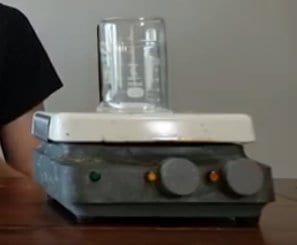
A magnetic stirrer is a specialized bit of lab equipment for sterilized stirring of ingredients. There’s a magnetic bar you drop inside your solution, which spins while the device is on. Usually the device has a built-in hotplate for temperature manipulation too. You can find these on Amazon for ~$30-100 and up.
Mix up a measured batch of terpenes in the smaller beaker
John Brown of YouTube channel HowToWeed is gracious enough here to share his own eponymous recipe, which he reports as “a citric, piney, earthy flavor.”
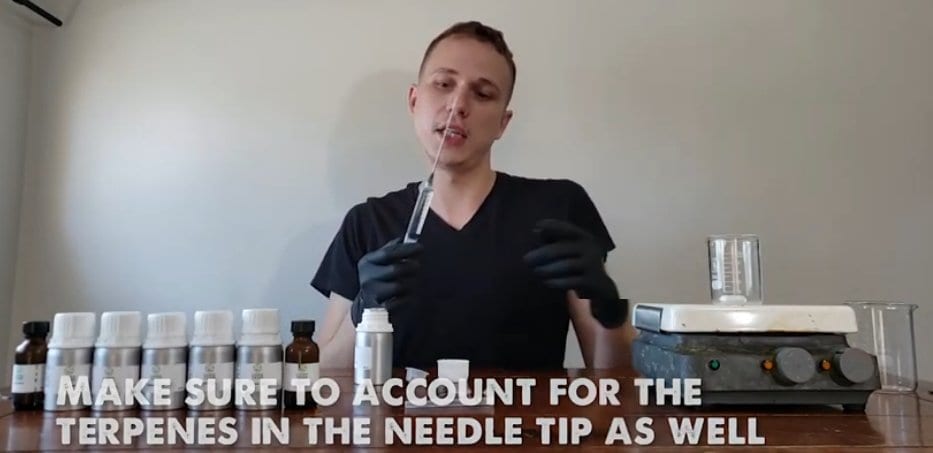
Use a separate syringe (or whatever measuring device) to avoid cross-contamination of terpenes, or at least keep them clean between uses. If you have to pause in this process, put the larger beaker over the smaller one to prevent any volatiles from escaping. “Volatiles” are just the vapors. In other words, we don’t want the flavors to evaporate.
Put the beaker with stir-wand on the magnetic stirrer and turn it on
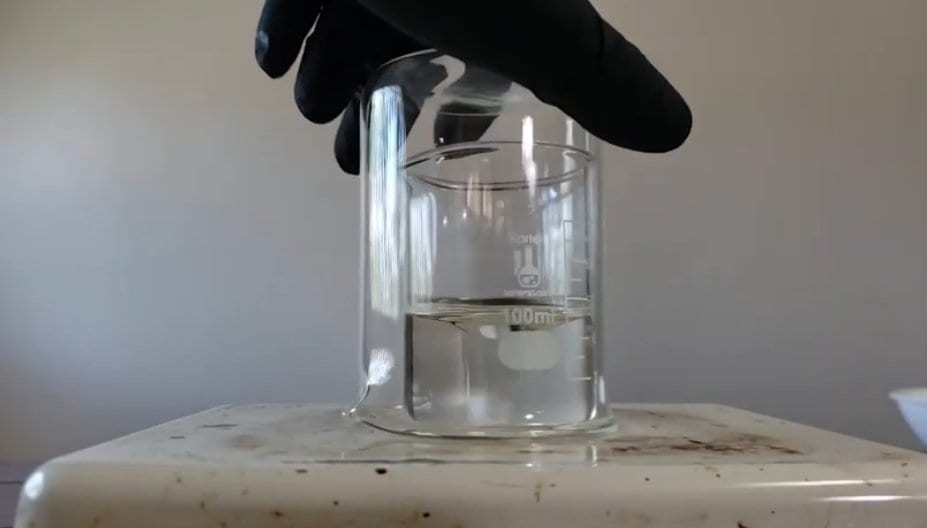
Cover with the larger beaker to prevent escaping volatiles. You may apply some heat from the hotplate control if desired. You want to be careful not to reach boiling temperature, though. That’s different for each terpene, but in this recipe, none of the terpenes boils at a temperature lower than 127°C (260°F), so keep it at or lower than 100°C (212°F) just to be on the safe side, since hotplate heating isn’t exactly the most precise.
Boiling points for each of the terpenes in this recipe:
- Terpineol Alpha – 217C (422F)
- Limonene – 176C (348F)
- Alpha Pinene – 156C (312F)
- Beta Pinene – 165C (329F)
- Myrcene – 167C (332F)
- Humulene – 127C (260F)
- Terpinolene – 184C (363F)
- Linalool – 198C (388F)
Lastly, pour your stirred mixture into your storage container and you’re done. You’re all ready to add your terpene mixture to your next batch of oil, shatter, or what-have-you.
Here’s a capture charm of John Brown’s personal blend. Thanks to HowToWeed for the continued education efforts in the cannabis community!
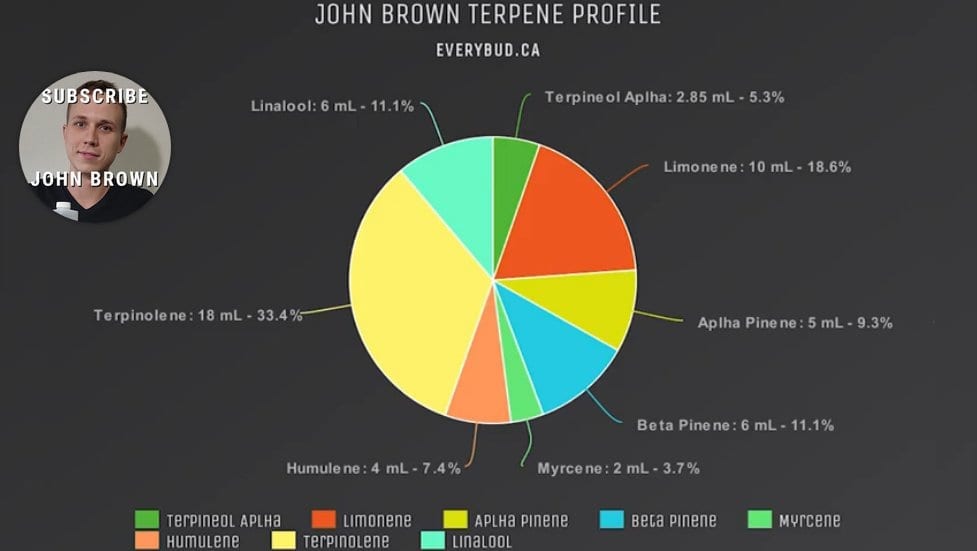
A word or three about terpenes
Terpenes are part of what makes weed strains unique.
Terpenes are going to work their way into the mainstream dialog pretty soon, even outside cannabis culture. Aside from the cannabis world, terpenes are already important to the perfume, cosmetic, food, and medical industries. They’re a large part of what we call “essential oils.” Both vitamin A and steroids are classified as terpenes.
Here’s a short guide to the most common cannabis terpenes. It gives you a good sense of what blends of flavors, aromas, and characteristics we’re adding to a blend. Notice also that terpenes don’t have to come from cannabis at all. The same organic compound is found in dozens of different plants naturally. Most terpenes, you’ll notice, are familiar from your kitchen spice rack.
Are terpenes part of the entourage effect?
That’s a question that’s going to be a subject of debate for a while. The “entourage effect” is a proposed factor in how smoking a cannabis product makes you feel. Not just the aroma or taste, but the psychoactive effects as well. Some theories say this works by enhancing the action of cannabinoid receptors.
Now, is that effect for real, or is it a placebo? The scientific jury is out on that one. Of course, open study of cannabis is in its frontier days since its recreational legalization is only recently widespread.
Since some terpenes, in general, already have other effects than just providing a flavor and bouquet, there might be a possibility that future research could uncover links between terpenes and psychoactive effects. After all, scientists dismissed pheromone effects in humans for years before they finally found that they influenced behavior.
It’s an interesting area of research to keep an eye on. This has been your science geek corner for the day.
Has anybody else been mixing up their own batches of terpenes at home?
What methods have you used? What blends have you discovered? Care to share your recipes? Tell us all about your terpene experiments in the comments or on our forum!




